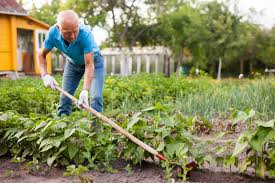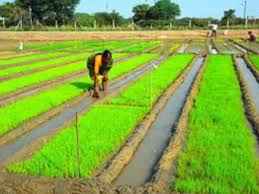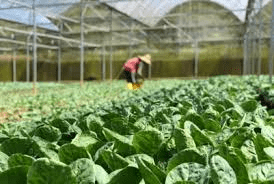Farming is a complex process that involves multiple stages, from initial planning to the final harvesting of crops. Understanding each step is crucial for successful farming and ensures that crops are grown efficiently and sustainably.
This guide covers the essential steps involved in farming, providing a clear, step-by-step approach to help beginners navigate the farming process.
Planning and Preparation
Effective planning and preparation set the foundation for successful farming. This stage involves making important decisions about what to grow, preparing the land, and acquiring the necessary tools and equipment.
1. Choosing the Right Crops: Selecting the right crops is the first step in planning. Consider factors such as climate, soil type, and market demand. Research which crops are best suited to your region and align with your goals. For example, if you live in a hot, dry area, drought-resistant crops like sorghum or millet might be ideal.
2. Soil Testing and Preparation: Conduct soil tests to determine the soil’s pH, nutrient levels, and texture. This information helps you understand the soil’s suitability for different crops and what amendments might be needed. Prepare the soil by clearing debris, tilling, and adding organic matter or fertilizers as needed. Good soil preparation improves root growth and crop yields.
3. Selecting Farming Equipment: Choose the right equipment based on the size of your farm and the crops you plan to grow. Essential equipment includes tractors for plowing and planting, irrigation systems for watering, and harvesters for collecting crops. Ensure that the equipment is in good working condition and suitable for the tasks you need to perform.
Planting and Cultivation

Once the planning and preparation are complete, the next step is planting and cultivating the crops. This stage involves sowing seeds, managing water and nutrients, and ensuring that crops have the right conditions to grow.
1. Sowing Seeds or Transplanting Seedlings: Depending on the crop, you may sow seeds directly into the soil or transplant seedlings started in a nursery. Follow the recommended planting depth and spacing for each crop. Sowing seeds at the correct depth ensures good germination, while proper spacing allows plants to grow without competition for resources.
2. Irrigation and Water Management: Proper irrigation is crucial for crop health and yield. Determine the water requirements for your crops and choose an appropriate irrigation method, such as drip irrigation or sprinkler systems. Monitor soil moisture levels and adjust irrigation schedules to prevent overwatering or underwatering.
3. Fertilization and Soil Enrichment: Fertilize crops based on soil test results and the nutritional needs of the plants. Use a balanced fertilizer that provides essential nutrients like nitrogen, phosphorus, and potassium. Organic options like compost and manure can also enrich the soil. Regularly monitor soil health and adjust fertilization practices as needed.
Read Also: 18 Medicinal Health Benefits Of Ligustrum lucidum (Glossy Privet)
Crop Management

Crop management involves ongoing care and maintenance of your crops to ensure they grow healthy and produce high yields. This includes controlling weeds, pests, and diseases, and monitoring crop growth.
1. Weed Control: Weeds compete with crops for nutrients, water, and light. Use methods like mulching, hoeing, or applying herbicides to control weeds. Mulching with organic materials can also improve soil health and reduce weed growth. Regularly inspect fields for weeds and take action as needed to prevent infestations.
2. Pest and Disease Management: Monitor crops for signs of pests and diseases. Use integrated pest management (IPM) techniques, which combine biological, cultural, and chemical methods to control pests and diseases. Introduce natural predators, use resistant crop varieties, and apply targeted treatments when necessary to protect your crops.
3. Monitoring Growth and Health: Regularly check your crops for signs of stress, nutrient deficiencies, or other issues. Assess plant growth, leaf color, and overall health. Address any problems promptly to prevent them from affecting your crop yield. Keeping detailed records of crop growth and any issues encountered can help you make better decisions in the future.
Harvesting and Post-Harvest
The final stages of farming involve harvesting the crops, processing them, and preparing them for storage or sale. Proper handling during these stages is crucial for maintaining crop quality and minimizing losses.
1. Timing and Techniques for Harvesting: Harvest crops at the right time to ensure optimal quality and yield. Timing varies depending on the crop; for example, grains should be harvested when they are fully mature and dry. Use appropriate techniques and equipment for harvesting to minimize damage to the crops. For some crops, like fruits and vegetables, manual harvesting may be required to avoid bruising.
2. Processing and Storing Crops: After harvesting, crops often require processing, such as cleaning, sorting, or packaging. Processing helps prepare crops for sale and extends their shelf life. Store crops in suitable conditions to prevent spoilage and preserve quality. For example, grains should be kept in a cool, dry place, while fruits and vegetables may need refrigeration.
3. Quality Control and Sorting: Inspect crops for quality and sort them based on size, ripeness, and appearance. Remove any damaged or diseased items to ensure that only high-quality products are sold. Implementing quality control measures helps meet market standards and enhances customer satisfaction.
Maintenance and Improvement
Maintaining and improving farming practices is essential for long-term success and sustainability. Regular maintenance of equipment, soil health, and careful planning for future cycles all contribute to the overall productivity and efficiency of a farm. This section covers key aspects of maintenance and improvement, including equipment upkeep, soil conservation, and record-keeping.
Equipment Maintenance
Keeping farm equipment in good condition ensures it operates efficiently and lasts longer. Proper maintenance helps avoid costly repairs and downtime.
1. Regular Inspections: Frequently inspect equipment for signs of wear and tear. Check for loose parts, leaks, and any other issues that may affect performance. Addressing small problems early can prevent major breakdowns.
2. Cleaning: Clean equipment after each use to remove soil, debris, and residues. This helps prevent rust and damage and ensures that the equipment functions properly. For example, washing off plant residues from harvesters prevents the spread of diseases.
3. Lubrication: Regularly lubricate moving parts to reduce friction and wear. Follow the manufacturer’s recommendations for the type and frequency of lubrication. Proper lubrication helps maintain smooth operation and extends the life of the equipment.
4. Routine Servicing: Perform routine servicing according to the manufacturer’s guidelines. This includes changing oil, replacing filters, and adjusting settings. Scheduled servicing helps keep equipment in top condition and prevents unexpected failures.
5. Storage: Store equipment in a dry, sheltered area to protect it from the elements. Use covers or tarps to prevent exposure to rain and sun, which can cause rust and degradation. Proper storage helps maintain equipment functionality and appearance.
Soil Health and Conservation
Maintaining soil health is critical for sustainable farming. Healthy soil supports plant growth, improves crop yields, and helps prevent erosion.
1. Soil Testing: Regularly test soil to monitor its nutrient levels, pH, and overall health. Use the results to adjust soil management practices and ensure that crops receive the necessary nutrients.
2. Organic Matter Addition: Add organic matter such as compost, manure, or cover crops to improve soil structure and fertility. Organic matter enhances soil moisture retention, nutrient availability, and microbial activity.
3. Erosion Control: Implement erosion control measures such as planting cover crops, using mulch, and constructing terraces. Erosion control practices help prevent soil loss and maintain soil health.
4. Reduced Tillage: Practice reduced or no-till farming to minimize soil disturbance. This approach helps preserve soil structure, reduce erosion, and improve water retention.
5. Crop Rotation: Rotate crops each season to prevent nutrient depletion and reduce the risk of soil-borne diseases and pests. Crop rotation promotes a balanced soil ecosystem and improves long-term soil health.
Read Also: List of Diseases Ruminant Animals (Livestock) Get from Feeds and Water
Planning for the Next Cycle

Planning for the next farming cycle involves evaluating past performance, making improvements, and preparing for future crops. Effective planning helps optimize productivity and efficiency.
1. Post-Harvest Analysis: Review the outcomes of the current farming cycle. Assess crop yields, quality, and any issues encountered. Use this analysis to identify areas for improvement and make informed decisions for the next cycle.
2. Adjusting Plans: Based on the post-harvest analysis, adjust your planting plans, crop selection, and management practices. For example, if a particular crop did not perform well, consider alternative varieties or different growing techniques.
3. Resource Management: Plan for the allocation of resources such as seeds, fertilizers, and water. Ensure that you have adequate supplies and that they are used efficiently to support the next farming cycle.
4. Seasonal Considerations: Take into account seasonal factors such as weather patterns and climate conditions. Plan planting and harvesting times to align with the expected conditions for optimal crop growth.
Record Keeping and Evaluation
Effective record-keeping and evaluation are essential for tracking progress, managing resources, and making informed decisions.
1. Tracking Inputs and Outputs: Keep detailed records of all inputs (seeds, fertilizers, water) and outputs (crop yields, sales). This helps monitor the efficiency of resource use and assess the economic performance of your farm.
2. Evaluating Crop Performance: Regularly evaluate crop performance by comparing actual yields and quality to expected outcomes. Use this information to identify trends, successes, and areas needing improvement.
3. Financial Management and Planning: Maintain financial records, including expenses, revenues, and profits. Regularly review financial statements to assess the farm’s financial health. Use financial data to create budgets, forecast future expenses, and plan investments.
4. Benchmarking: Compare your farm’s performance with industry benchmarks or similar operations. Benchmarking helps identify areas where you can improve and adopt best practices.
5. Continuous Improvement: Use insights from record-keeping and evaluation to continuously improve your farming practices. Implement changes based on data and feedback to enhance productivity and sustainability.
Conclusion
Maintaining and improving farming practices are vital for ensuring long-term success and sustainability. By focusing on equipment maintenance, soil health, and careful planning for future cycles, farmers can enhance productivity and efficiency.
Effective record-keeping and evaluation help track progress and make informed decisions. Embracing these practices will support the growth of a thriving and sustainable agricultural operation, contributing to a more productive and resilient farming future.
Read Also: Potato Farming Guide – 7 Tips to Grow Sacks Full of Potatoes

